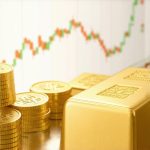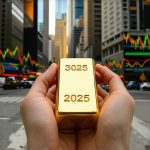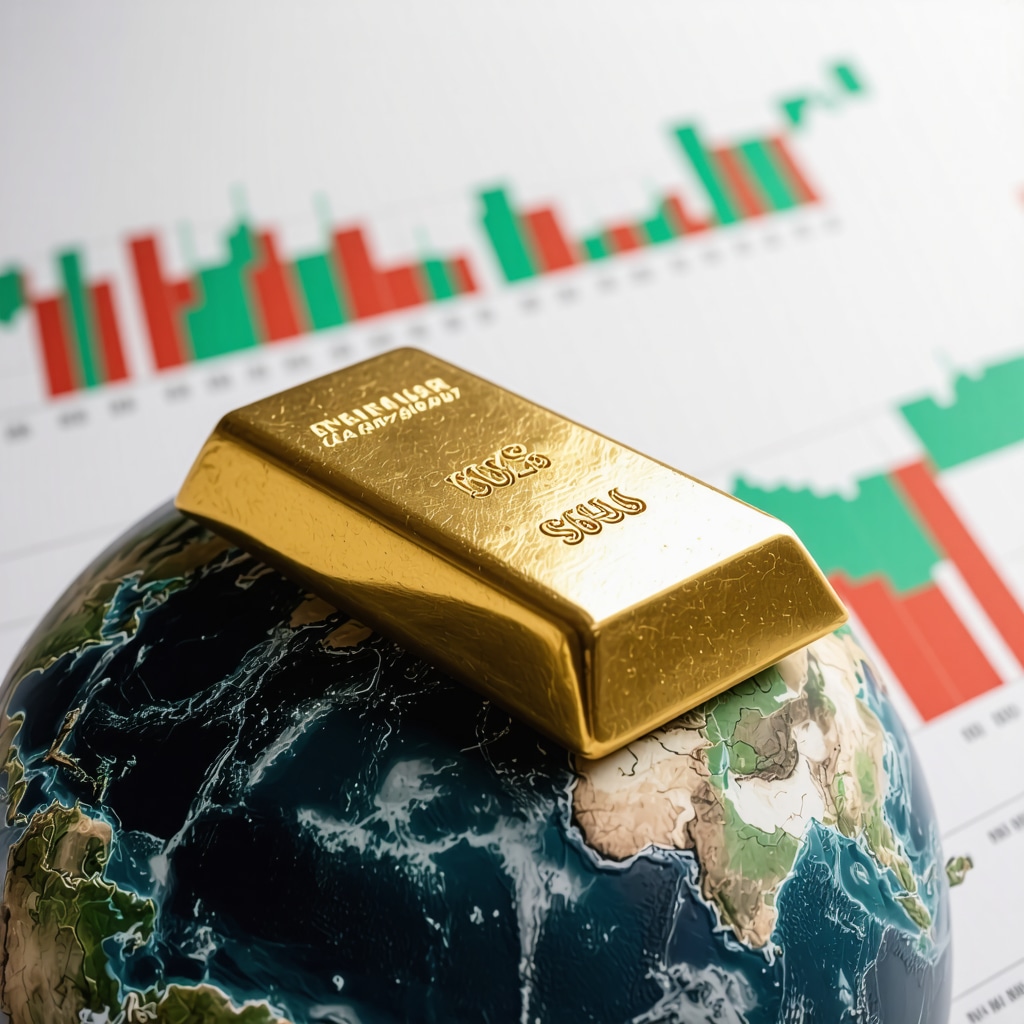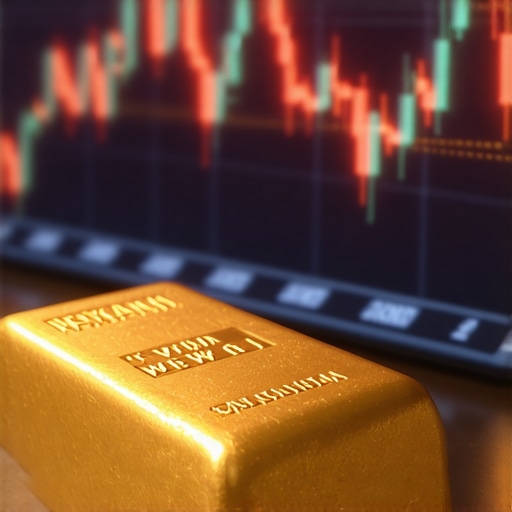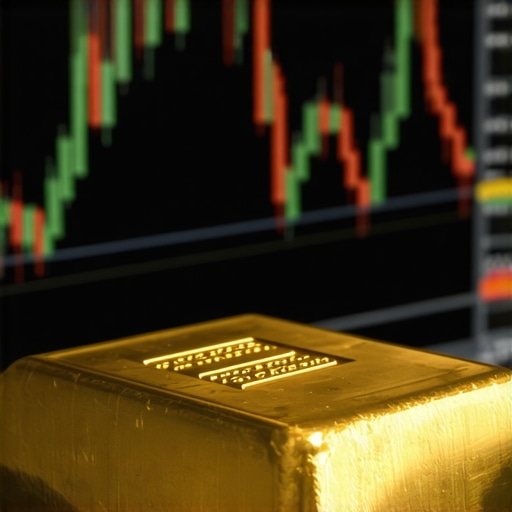The Complex Web of 2025 Gold Price Drivers: An Expert Perspective
As we approach 2025, understanding the multifaceted factors influencing gold prices becomes crucial for sophisticated investors and industry analysts. Gold, long regarded as a hedge against market volatility, is now subject to an intricate interplay of economic indicators, geopolitical shifts, and evolving market dynamics. This article delves into the deep-rooted and emergent drivers shaping gold’s trajectory in 2025, providing a comprehensive, expert-level analysis.
Economic Fundamentals and Their Role in Gold Price Fluctuations
At the core of gold price determination lie macroeconomic variables such as inflation rates, real interest rates, and currency stability. In 2025, persistent inflationary pressures, driven by post-pandemic economic recovery and supply chain disruptions, are compelling investors to seek safe-haven assets like gold. The nuanced relationship between real interest rates and gold—where negative real yields tend to bolster gold’s appeal—remains a pivotal factor. Moreover, central bank policies, particularly gold purchases by national reserves, significantly influence supply-demand dynamics, as detailed in this analysis.
Political Instability and Geopolitical Tensions as Catalysts
Geopolitical uncertainties, including regional conflicts and trade disputes, continue to serve as catalysts for gold’s safe-haven demand. The evolving landscape of international diplomacy, coupled with the potential for policy shifts in major economies, injects volatility into the market. For instance, heightened tensions in strategic regions can trigger surges in gold prices, emphasizing its role as a geopolitical hedge. The intricate relationship between political stability and market confidence underscores the necessity for investors to monitor international developments closely.
Market Trends and Technological Innovations Influencing Gold Demand
Market trends in 2025 reveal a transition towards digital and technological integration, impacting gold’s role in finance and industry. The rising popularity of gold-backed digital assets and ETFs reflects a shift in investor preferences, diversifying gold’s market presence. Additionally, sectors such as jewelry, technology, and industry consumption patterns are evolving, influenced by consumer behavior and technological advancements, as explored in this report.
How Will Supply and Demand Dynamics Reshape Gold Prices in 2025?
Understanding the supply-demand equilibrium requires a nuanced view of mining output, recycling, and geopolitical factors. While mining disruptions can tighten supply, increased recycling and technological efficiencies may offset shortages. Demand from institutional investors, central banks, and emerging markets will play a decisive role in price movements, especially as global economic conditions fluctuate.
For those seeking strategic insights, exploring this detailed analysis offers valuable forecasts on supply-demand interplay.
Expert Recommendations and Future Outlook
Given the complexity of 2025’s gold market, investors should consider diversified strategies, including physical gold holdings, ETFs, and gold mining stocks. Staying informed about geopolitical developments, macroeconomic indicators, and technological shifts is essential for optimizing investment outcomes. For a comprehensive guide on effective strategies, visit this resource.
If you are a professional or enthusiast eager to contribute insights, sharing your analysis on emerging gold trends can enrich the collective understanding. The evolving landscape of 2025 demands continuous vigilance and strategic agility.
For a broader perspective, consult this authoritative publication on the future of gold markets.
Technological Disruption and Its Impact on Gold Valuation
As 2025 unfolds, technological innovations are not only transforming industries but also reshaping gold’s role in modern finance. The advent of blockchain-based assets, such as gold-backed cryptocurrencies and ETFs, introduces a new layer of complexity and opportunity. These digital assets provide investors with liquidity and transparency but also pose regulatory and valuation challenges. According to a comprehensive analysis by the industry experts, understanding how technological integration influences gold’s market perception is essential for savvy investors.
Could emerging digital assets redefine gold’s safe-haven status in 2025?
This question prompts a reevaluation of traditional safe-haven assets. While physical gold remains the cornerstone of wealth preservation, digital gold assets are increasingly gaining traction, offering new diversification avenues. The key lies in assessing their stability, regulatory environment, and market acceptance. For investors looking to leverage these innovations, exploring this resource can provide strategic guidance on integrating digital assets into a balanced portfolio.
Global Economic Shifts and Policy Responses: A Driver of Price Volatility
In 2025, macroeconomic policies, particularly those related to monetary easing and fiscal stimulus, continue to influence gold prices. Central banks worldwide are balancing inflation control with economic growth, often resorting to unconventional measures such as quantitative easing, which can weaken fiat currencies and bolster gold’s appeal. Furthermore, geopolitical tensions and trade policies are prompting swift policy responses, adding volatility to the gold market. Experts emphasize that monitoring these policy shifts, especially in major economies like the US, EU, and China, is crucial for accurate forecasts. For a nuanced understanding, consult this detailed analysis.
Investor Strategies: Navigating Uncertainty with Advanced Tools
Given the unpredictable nature of 2025’s market drivers, sophisticated investors are turning to advanced analytical tools and strategic frameworks. Techniques such as macroeconomic scenario planning, technical analysis, and diversification across physical gold, ETFs, and mining stocks enable risk mitigation and opportunity maximization. For practical techniques, consider exploring this guide. The goal is not only to capitalize on trending opportunities but also to buffer against unforeseen shocks.
If you wish to deepen your understanding, sharing your insights or reading more about emerging trends can foster a more informed community. Engaging with industry reports and expert analyses remains invaluable for strategic decision-making in 2025.
Deciphering the Impact of Technological Disruption on Gold Valuation in 2025
As we forge further into 2025, technological advancements continue to redefine the landscape of gold valuation and investment strategies. Blockchain innovations, especially the advent of decentralized finance (DeFi) platforms and tokenized gold assets, are revolutionizing how investors perceive and utilize gold as a financial instrument. These digital representations of gold, often traded as cryptocurrencies or digital tokens, introduce unprecedented liquidity, transparency, and programmability, fundamentally altering traditional valuation paradigms.
For example, gold-backed cryptocurrencies like Pax Gold (PAXG) enable investors to hold fractionalized gold units that are securely stored and easily tradable across global exchanges. According to a recent comprehensive report by the Blockchain Research Group, the integration of blockchain technology significantly enhances market efficiency but also introduces regulatory and cybersecurity challenges that could impact gold’s safe-haven status.
Furthermore, the rise of smart contracts automating gold transactions ensures compliance and reduces counterparty risk, but demands a nuanced understanding of blockchain governance and security protocols. As digital gold assets grow in prominence, their influence on physical gold demand and market volatility warrants close attention from investors and policymakers alike.
Could the proliferation of digital gold assets lead to a paradigm shift in gold’s safe-haven reputation in 2025?
This question underscores the need for a rigorous evaluation of digital assets’ stability, regulatory acceptance, and market liquidity. While physical gold remains the gold standard for wealth preservation, the rapid adoption of digital equivalents could diversify risk and create new investment frontiers. To effectively leverage these innovations, investors should explore strategic integration methods, such as combining physical holdings with digital tokens within a diversified portfolio, as discussed in this expert analysis.
Global Policy Shifts and Their Role in Gold Market Volatility in 2025
The macroeconomic environment in 2025 remains deeply intertwined with policy responses from major economies. Central banks, especially in the US, EU, and China, are employing unconventional monetary policies—quantitative easing, negative interest rates, and currency interventions—to address inflationary pressures and stimulate growth. These measures often lead to fiat currency devaluation, which, in turn, bolsters gold’s appeal as an intrinsic store of value.
For instance, the Federal Reserve’s ongoing balance sheet expansion and the European Central Bank’s asset purchase programs have historically correlated with increased gold prices. According to data from the International Monetary Fund’s World Economic Outlook, such policy measures tend to weaken the dollar and elevate gold demand during periods of economic uncertainty.
Additionally, geopolitical tensions stemming from trade disputes, regional conflicts, and strategic rivalries influence policy decisions, often resulting in market volatility. Investors must monitor these policy shifts closely, utilizing advanced analytical tools such as macroeconomic scenario modeling and geopolitical risk assessment frameworks to anticipate price movements and optimize their strategies.
How can investors develop resilient strategies amidst policy-induced gold market volatility?
Developing resilience involves diversifying across asset classes, employing hedging techniques, and leveraging real-time data analytics. Incorporating options, futures, and structured products can hedge against adverse price swings, while staying informed through authoritative sources such as the Financial Times and the Bloomberg Markets ensures timely insights. Engaging with expert analyses and scenario planning enhances preparedness for rapid market shifts, which are likely given the current macroeconomic landscape.
Emerging Market Dynamics and Their Influence on Gold Demand in 2025
Emerging markets, driven by rapid economic growth and expanding middle classes, are increasingly becoming pivotal in global gold demand. Countries like India and China continue to be the largest consumers of gold jewelry and investment products, shaping global price trends. Moreover, these nations are adopting more sophisticated financial instruments, including gold ETFs and digital gold platforms, further integrating gold into their economic frameworks.
According to the World Gold Council’s latest demand report, the rise in domestic gold consumption combined with central bank purchases in these regions is expected to sustain upward pressure on prices, even amidst global uncertainties. However, political stability, regulatory changes, and currency fluctuations within these markets remain critical factors influencing demand trajectories.
To capitalize on these trends, investors should consider regional market analyses and leverage local insights to fine-tune their engagement strategies. Participating in regional conferences and consulting with local experts can provide invaluable perspectives for navigating emerging market complexities.
Decoding the Interplay of Quantum Supply Chain Disruptions and Gold Valuations in 2025
As global supply chains become increasingly complex, quantum computing breakthroughs are poised to revolutionize logistical modeling and risk assessment within the gold industry. These technological strides enable unprecedented precision in predicting mine output fluctuations, recycling rates, and geopolitical bottlenecks, thereby refining market forecasts. Industry leaders, such as those at the Quantum Tech News, emphasize that integrating quantum analytics into gold demand-supply models will be essential for staying ahead in volatile markets.

How Do Cybersecurity and Blockchain Innovation Converge to Reshape Gold Market Integrity?
The proliferation of blockchain technology in securing gold transactions has become a game-changer, mitigating fraud and counterparty risks. Advanced cryptographic protocols and decentralized ledgers foster transparency and traceability, essential for institutional trust. According to a detailed report by Blockchain Research Group, these innovations are not only enhancing security but also enabling new forms of digital gold assets, further diversifying the investment landscape.
What are the implications of quantum-resistant blockchain for gold trading security in 2025?
This emerging frontier involves deploying quantum-resistant cryptography to safeguard digital gold assets against potential future cyber threats, ensuring long-term market resilience. Investors and regulators must collaborate to establish standards that balance innovation with security, a topic elaborated in Cybersecurity Journal. Engaging with these developments is crucial for safeguarding assets and maintaining market integrity.
Intellectual Property and Patent Strategies in Gold-Related Technologies
As technological innovation accelerates, securing patents for novel gold extraction, refining, and digital asset management techniques becomes strategic. Firms investing in proprietary methods—such as environmentally sustainable mining or blockchain-based custody solutions—must navigate a complex landscape of intellectual property rights. The World Intellectual Property Organization (WIPO) highlights that strategic patenting can provide competitive advantage and market exclusivity, fostering innovation while protecting investments.
To maximize strategic positioning, industry stakeholders should conduct comprehensive patent landscape analyses and consider international patent filings to safeguard technological advancements across key jurisdictions.
Could AI-driven Predictive Analytics Redefine Gold Investment Decision-Making in 2025?
Artificial Intelligence (AI) and machine learning models are increasingly capable of ingesting vast datasets—macro-economic indicators, geopolitical events, and technological trends—to generate real-time, nuanced market forecasts. According to experts at AI Technology Review, deploying AI-driven analytics enhances predictive accuracy, enabling investors to execute more informed, agile strategies amid rapid market shifts.
Investors should explore AI-powered tools that incorporate sentiment analysis, macroeconomic scenario modeling, and anomaly detection to navigate the complexities of the 2025 gold market effectively.
How Will Climate Change and Sustainable Mining Practices Influence Gold Prices?
Environmental considerations are increasingly driving industry standards and consumer preferences. Innovations in sustainable mining—such as the adoption of renewable energy sources, water recycling, and eco-friendly extraction techniques—are shaping supply-side dynamics. According to a recent report by the Sustainable Mining Initiative, these practices not only reduce ecological footprints but also influence investor perception and regulatory policies, ultimately impacting gold’s valuation.
Stakeholders investing in or promoting sustainable gold practices must stay abreast of evolving standards and certifications to leverage environmental credentials for market advantage.
Conclusion: Embracing a Multidimensional Approach to Gold Investment in 2025
The gold market in 2025 is characterized by technological innovation, geopolitical shifts, and evolving investor expectations. Sophisticated stakeholders are advised to adopt an integrated strategy—leveraging quantum analytics, blockchain security, AI forecasting, and sustainability metrics. Engaging with authoritative sources such as World Gold Council and industry think tanks will be instrumental in navigating this multifaceted landscape. Don’t miss the opportunity to position yourself at the forefront of this dynamic market—continuously update your knowledge and adapt your strategies accordingly.
Expert Insights & Advanced Considerations
1. Quantum Computing’s Impact on Gold Supply Chain Transparency
Emerging quantum technologies are poised to revolutionize logistical modeling and risk assessment, enabling unprecedented accuracy in predicting gold supply fluctuations and recycling efficiency. Industry leaders emphasize that integrating quantum analytics will be crucial for maintaining market edge amidst volatility.
2. Digital Gold Assets Redefining Safe-Haven Paradigms
Blockchain-based gold-backed cryptocurrencies and ETFs are gaining prominence, offering enhanced liquidity and transparency. However, their influence on traditional physical gold demand depends heavily on regulatory developments and market acceptance, demanding a nuanced strategic approach.
3. Macroeconomic Policies and Geopolitical Risks as Market Drivers
Unconventional monetary measures like quantitative easing and currency interventions continue to weaken fiat currencies, elevating gold’s intrinsic value. Investors must monitor policy shifts in major economies, utilizing advanced scenario analysis to navigate potential volatility.
4. Sustainability and Ethical Mining Practices as Value Drivers
Innovations in eco-friendly mining and renewable energy adoption are not only reducing environmental footprints but also shaping investor perceptions. Keeping abreast of evolving standards will be vital for leveraging sustainability as a market advantage.
5. AI and Predictive Analytics Enhancing Investment Strategies
Advanced AI models ingest macroeconomic, geopolitical, and technological data to generate real-time forecasts. Deploying these tools can significantly improve decision-making agility in the dynamic 2025 gold market.
Curated Expert Resources
- World Gold Council: Renowned for comprehensive research and market trend analysis, essential for deep expertise.
- Blockchain Research Group: Leading authority on digital gold assets, blockchain integration, and regulatory implications.
- Financial Times: Trusted source for macroeconomic policies, monetary trends, and geopolitical developments influencing gold.
- Sustainable Mining Initiative: Key insights into eco-friendly mining practices and their market impacts.
- AI Technology Review: Cutting-edge analysis of AI applications in financial forecasting and market analysis.
Final Expert Perspective
In 2025, gold remains a complex interplay of technological innovation, macroeconomic policies, and geopolitical shifts. The integration of quantum analytics, blockchain advancements, and AI-driven forecasts offers sophisticated investors a strategic edge. Embracing a multidimensional approach—balancing physical assets with digital innovations and sustainability metrics—will be essential for navigating this evolving landscape. Engage continuously with authoritative sources, share insights, and refine your strategies to stay at the forefront of gold market developments.
,

